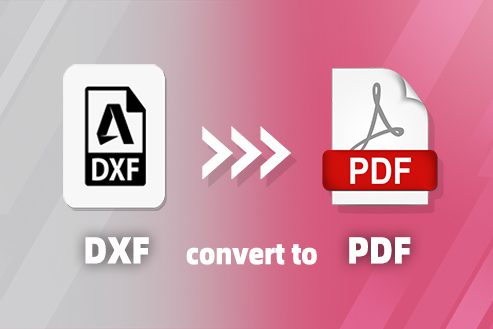Every designer architect and engineer knows how powerful DXF files are for creating technical drawings. Yet when it comes to sharing or printing those drawings, things can get tricky. Not everyone has CAD software to open a DXF file, which is why learning how to convert DXF to PDF can make your life much easier.
A DXF to PDF converter helps you turn complex design files into simple, ready-to-view documents that look professional and accurate on any device. Whether you are preparing project drafts, construction plans, or creative layouts, this simple step helps your work shine.
What Makes DXF and PDF Different
DXF files are mainly used in CAD software like AutoCAD or DraftSight. They hold detailed layers, coordinates, and dimensions that define your design. However, these files are not easy to open without special programs.
PDF, on the other hand, is a universal file format that everyone can open. It keeps the layout and details exactly the same across different computers and systems. That is why many professionals prefer to convert DXF to PDF before sending or presenting their work.
Why It’s Smart to Convert DXF to PDF
Converting your DXF drawings to PDF gives you freedom and flexibility. Once your file is in PDF form, you can easily print, email, or upload it without worrying about compatibility. Clients and coworkers can open it instantly even if they do not have CAD tools installed.
A DXF file converter also helps you protect your creative and technical work. When you convert your design to PDF, it becomes read-only, meaning others can view but not edit your original drawing. This adds a professional layer of security to your shared files.
Another great advantage is that PDF files are much smaller and lighter, which makes them easier to share or store online while keeping every line sharp and clear.
How to Convert DXF to PDF Smoothly
Converting your file does not require technical knowledge. Most DXF to PDF converters work with a simple drag-and-drop process. You open your converter, select your DXF drawing, choose PDF as the output format, and start the conversion.
Many modern converters also allow batch DXF to PDF conversion, which means you can process several drawings at once. This feature saves time for professionals who deal with multiple project files daily.
Best Features of a Reliable DXF to PDF Converter
When choosing a converter, look for one that maintains the quality and accuracy of your drawings. A reliable tool should keep all the layers, line weights, and text perfectly aligned during conversion.
It should also let you customize your output with settings for page size, color, orientation, and margins. This helps ensure your PDF matches the exact layout of your original design.
Some advanced DXF to PDF converters even include automation features that automatically convert new files placed in a folder, saving you extra effort when working with large project loads.
Who Needs to Convert DXF Drawings to PDF
This conversion process benefits almost every design-related profession. Architects often convert floor plans and building layouts into PDF to share with clients or city departments. Engineers convert mechanical and electrical diagrams for team reviews. Designers convert creative concepts into PDF to display visual ideas without needing special software.
Even project managers use DXF to PDF converters to compile multiple drawings into a single professional report or presentation. No matter your role, converting DXF to PDF makes collaboration smoother and more efficient.
Offline and Online DXF File Converters
There are two main ways to convert DXF to PDF — using an online tool or a desktop application.
An online DXF converter is perfect for quick tasks and small files. You simply upload your drawing, convert it, and download the PDF.
However, if you work with large or confidential files, an offline DXF to PDF converter is a better choice. It gives you full control, works without an internet connection, and offers stronger data protection for sensitive projects.
Tips for a Perfect DXF to PDF Conversion
To get the best possible results when converting DXF to PDF, always check that your design is scaled correctly and that the text and layers are clean before exporting. Use consistent fonts and line thickness for better readability.
After conversion, open the PDF and make sure all details look sharp and clear. Save your final document with a descriptive file name to stay organized, especially if you handle multiple drawings at once.
Make Your Workflow Faster with the Right DXF File Converter
A DXF to PDF converter is more than just a file conversion tool — it is a time-saving assistant that helps you manage your workflow efficiently. Instead of struggling with compatibility issues or sending heavy files, you can create sleek, professional PDFs in seconds.
This process not only improves communication between teams and clients but also helps you build a more organized digital workspace. Whether you are designing homes, machinery, or creative models, converting DXF to PDF ensures your work looks perfect every time.
Final Thoughts
The ability to convert DXF to PDF gives you total control over how you share and present your designs. It bridges the gap between technical detail and professional presentation. With a reliable DXF file converter, your work stays secure, accessible, and visually flawless no matter where it is viewed.
If you want to simplify your design workflow, protect your projects, and present your ideas with confidence, start converting your DXF drawings to PDF today. It is fast, smart, and essential for every modern professional who values clarity and precision.





























